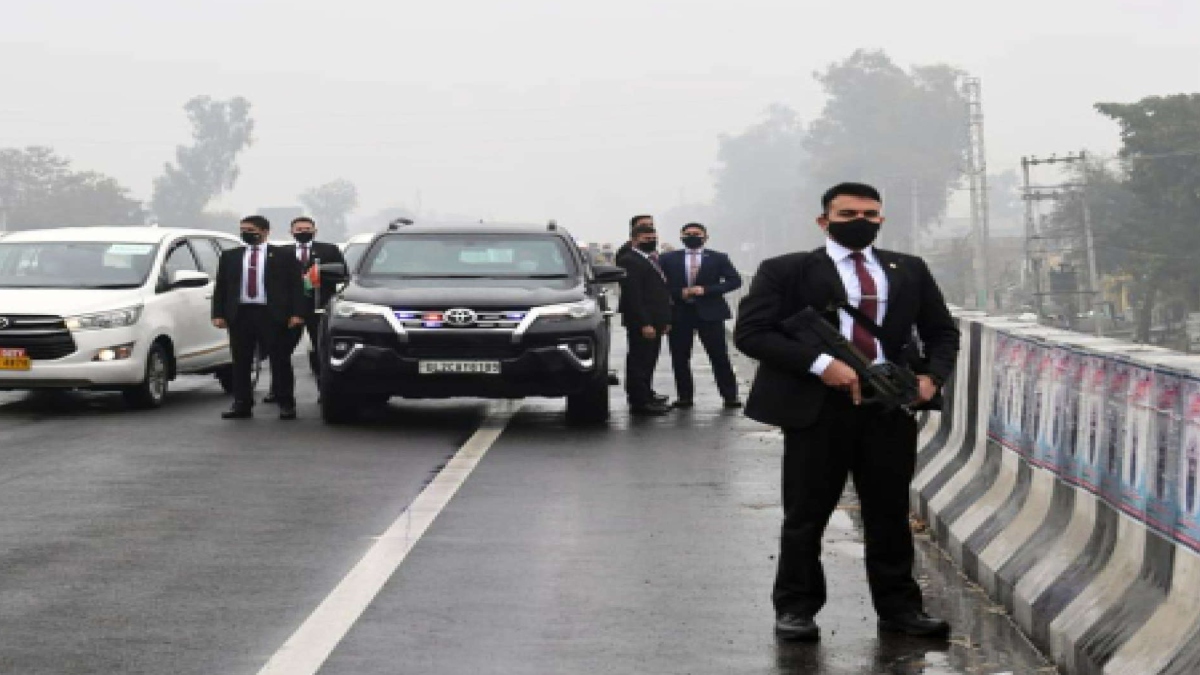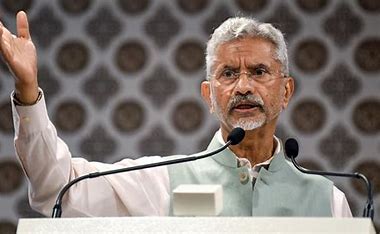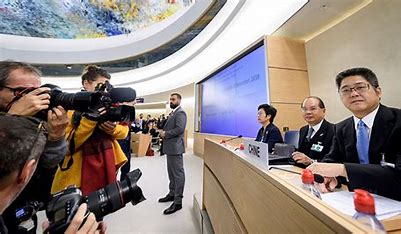
The stranding of Prime Minister’s convoy in the Punjab and the national convulsion caused by the statement of the Prime Minister that he has ‘returned alive’ from the blockade—a matter of grave worry— has generated a fierce nationwide debate and protests over the grave security lapse. Allegations of all manner are being traded by political rivals, so much so that there was speculation that the President’s rule may be imposed in Punjab as the grave security breach tantamount to failure of Constitutional machinery. But what constitutes failure of constitutional machinery, is not explicitly stated in the Constitution. However, a close study of the connected constitutional provisions, past precedents, and reports of various commissions shed abundant light as to what is meant by the breakdown of constitutional machinery and when can the President’s rule be invoked.
It is the duty of the Union to protect every State to ensure that the Government of every State is carried on in accordance with the provisions of the Constitution. (Art. 355). The executive power of every State has to be so exercised as to ensure compliance with the laws made by Parliament and the executive power of the Union shall extend to the giving of such directions to a State as may appear necessary to the GoI for the purpose. (Art.256). The Constitution also enjoins upon the States to exercise their executive power as not to impede or prejudice the executive power of the Union. Further, the Union, in exercise of its executive power, may give necessary direction to a State. (Art.257). Where any State has failed to comply with, or give effect to any direction given in the exercise of its executive power under any of the provisions of the Constitution, it shall be lawful for the President to hold that a situation has arisen in which the Government of the State cannot be carried on in accordance with the provisions of the Constitution (Art.365). The executive power of the Union is co-extensive with the legislative power of Parliament and includes all orders, instructions, directions, bye laws, regulations, notifications, etc. issued in exercise of executive power. The instructions, orders, arrangements required to be made in connection with the visit of the Prime Minister are a necessary adjunct of the executive power of the Union, and the States have to comply with them lock, stock, and barrel.
If the President is satisfied on receipt of a report from the Governor, or otherwise, that a situation has arisen in which the Government of the State cannot be carried on in accordance with provisions of the Constitution, the President may assume to himself all or any of the powers vested in or exercisable by the Governor or anybody or authority in the State(Art.356). The President can dismiss the Council of Minister of such a State, dissolve the Legislative Assembly or keep it under suspended animation. The powers of the High Court remain undisturbed as these cannot be taken away under the proclamation. Any such proclamation is subject to judicial review.
The precise question is what constitutes failure of constitutional machinery? Usually, it is construed to include the inability of the political parties to stake the claim to form Government for want of clear majority in the Legislative Assembly, defections from the ruling party reducing it to a minority in the legislature, the inability of the opposition to provide a convincing claim of majority support in the Assembly, political instability due to defections and a welter of claims and counterclaims by the political parties to form the Government or the inability of the State Government to uphold the Constitution or loss of confidence of the Assembly or defeat of Government on the floor of the House. It’s unmistakably and unambiguously clear from a close study of the constitutional provisions that the President can decide that the Government of the State is not being carried on following the provisions of the Constitution and that there is a failure of constitutional machinery.
Article 356 has been very frequently invoked, and grossly misused in many cases. Between 1951 and November, 2019, President’s rule was imposed more than a hundred times across the States. During the currency of the Provisional Parliament, that is before the constitution of the first Lok Sabha, President’s Rule was imposed in Punjab on 20 June 1951 which lasted up to 17 April 1952 to diffuse internal dissension in the ruling Congress party despite having a majority in the Legislative Assembly. In 1959, the Communist Government in Kerala was dismissed on the ground that it had been pursuing discriminatory policies. The United Front Ministry in West Bengal was dismissed in 1967 following the violence and collapse of two successive short-lived governments. Haryana Government was dismissed in 1967 on the ground of large-scale defection though the Government claimed to enjoy a majority in the legislature. After the internal emergency, President’s Rule was imposed in 9 States when Janta Alliance came to power in 1977 on the ground that these governments no longer enjoyed popular support. There was similar imposition in 1980 on the same ground. On 21 April 1989, President’s rule was imposed in Karnataka on the ground that the Chief Minister SR Bommai had lost the majority and the Assembly was dissolved. The Supreme Court delivered a landmark judgement in 1994 laying down procedure to be followed before dissolving an elected Legislative Assembly. The judgement has reduced to some extent the scope for misuse of Art. 356, but still instances of misuse abound. On 21 February 1998, the Governor of Uttar Pradesh dismissed Kalyan Singh Government and swore in Jagdambika Pal as CM, earning the distinction of shortest ever tenure. Kalyan Singh moved the Allahabad High Court which termed his Government’s dismissal as unconstitutional and Kalyan Singh was reinstated the same day. The Supreme Court struck down the order of Rajkhowa, the Governor of Arunachal declaring imposition of President’s rule in Arunachal Pradesh on January 25, 2016 as ultra vires the Constitution and reinstated the dismissed Congress Government. There are other recent instances of Uttarakhand and Maharashtra where the Supreme Court intervened and directed for the early floor test and prevented misuse of Art.356.
In the Constituent Assembly, speaking on the related draft Articles, Dr H V Kamath said, “I foresee the destruction of provincial autonomy, subversion of the provincial autonomy by the Union Government.” He was of the view that if these provisions were adopted without amendment, the ’Constitution will be in danger not so much from those who are agitating in the streets as from those who are in power…”. B. M. Gupte expressed the hope that ’it may remain a dead letter and no occasion will arise for the exercise of these extraordinary powers.’ This view was seconded by K. Santhanam. After a debate of over 5 hours on these articles, Dr. Ambedkar expressed hope that ’these articles will never be called into operation and that they would remain a dead letter.’
Though expected to remain a dead letter, the invoking of Art. 356 has engendered controversies right from the year 1951. The Sarkaria Commission, 1988, recommended its use sparingly. Justice Venkatachaliah Commission, 2002 too recommended that Article 356 should be used as a remedy of the last resort. At the meeting of the Inter State Council on 28 August, 2003, ’there was general consensus on the recommendations of the Sarkaria Commission.’
Yet, an altogether new and unprecedented situation has arisen due to the grave breach in the security of the Prime Minister, which may well fall within the ambit of failure of constitutional machinery. Obviously, the security breach arose due to dereliction of duty or complicity on the part of the law enforcing agencies to comply with the directions of the Union. The situation, being a vital matter impinging on the life and security of the Prime Minister and honour of the nation, can be viewed legitimately as breakdown of constitutional machinery. However, the fear of imposition of President’s rule in Punjab has receded as the matter is before the Supreme Court. As our constitutional guardian, the apex court will examine closely all aspects of the matter including security breach, dereliction of duty, violation of security directives by the concerned agencies-both of the Union and the State Governments. The security of the Prime Minister cannot be trifled with or compromised in any manner. All those who are found slack, negligent or complicit in any manner can be proceeded with sternly under the law of the land with punishment far severe and deterrent than the consequences that arise due to imposition of the President’s rule. Let’s wait for the judgement of the Supreme Court.
The writer is ex Addl Secretary, Lok Sabha and a member of Delhi Bar Council. Views expressed are individual.















